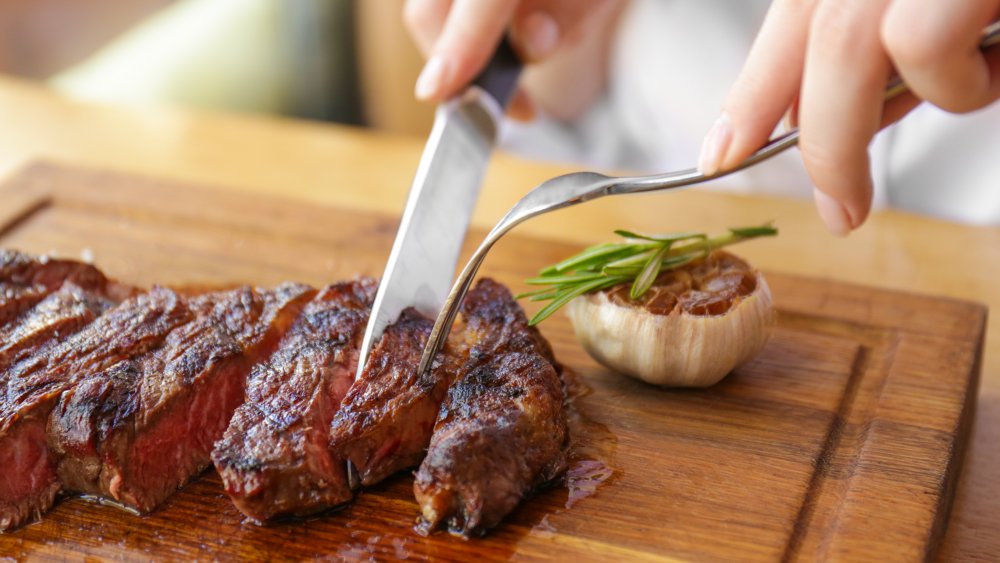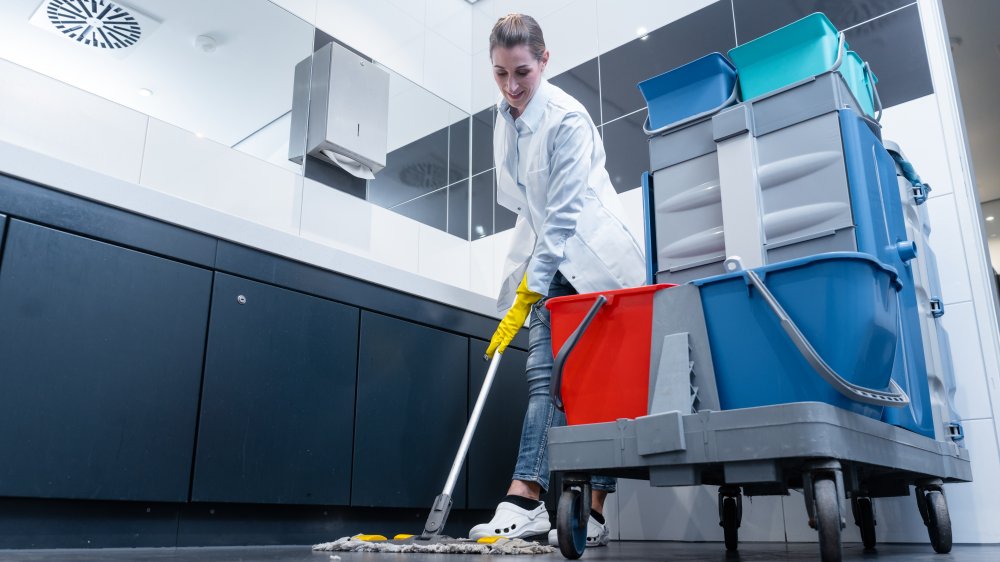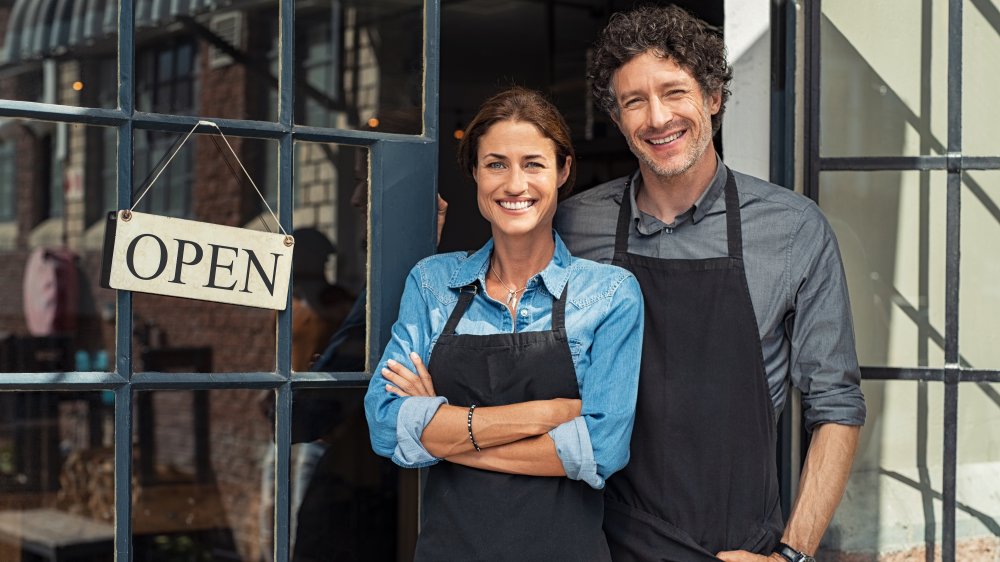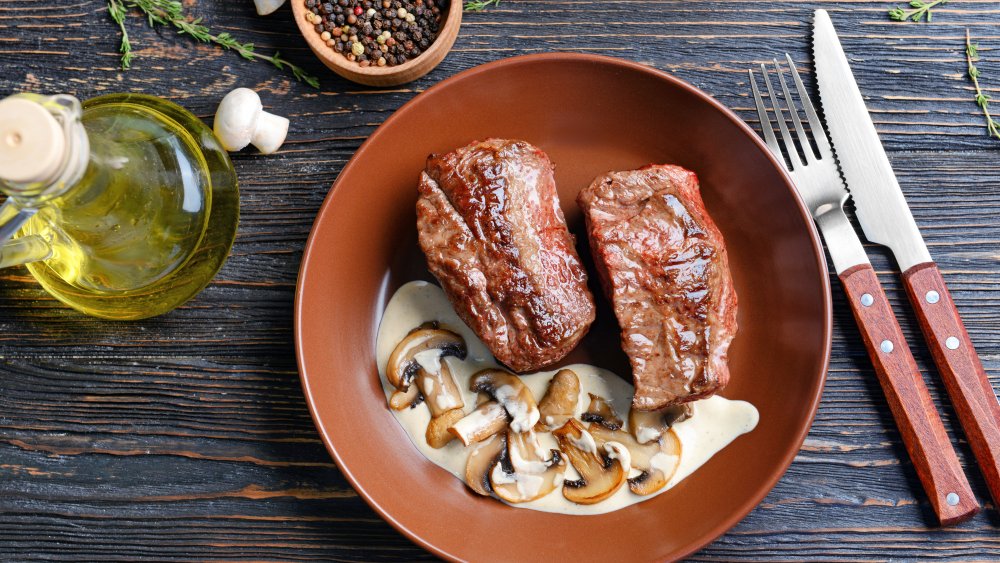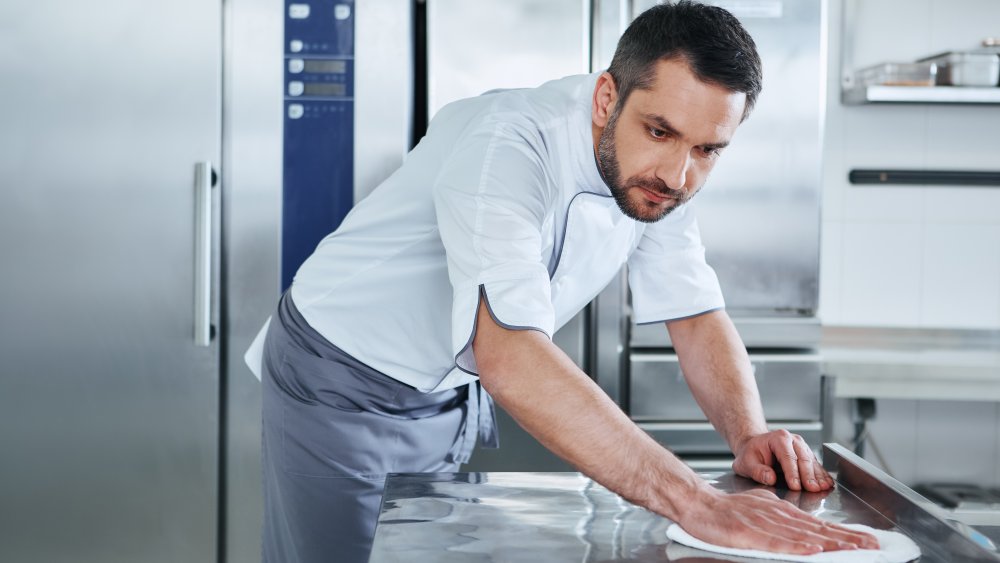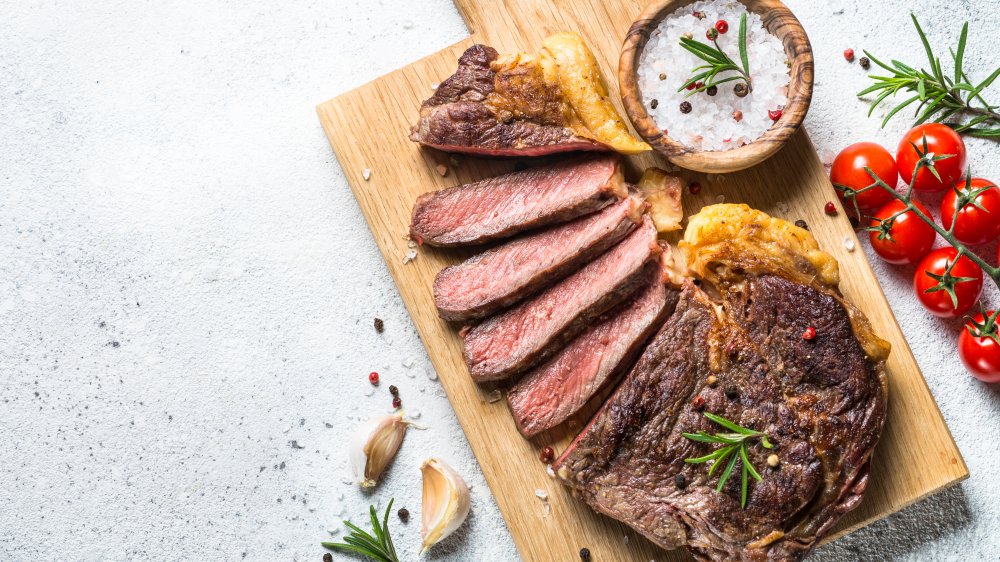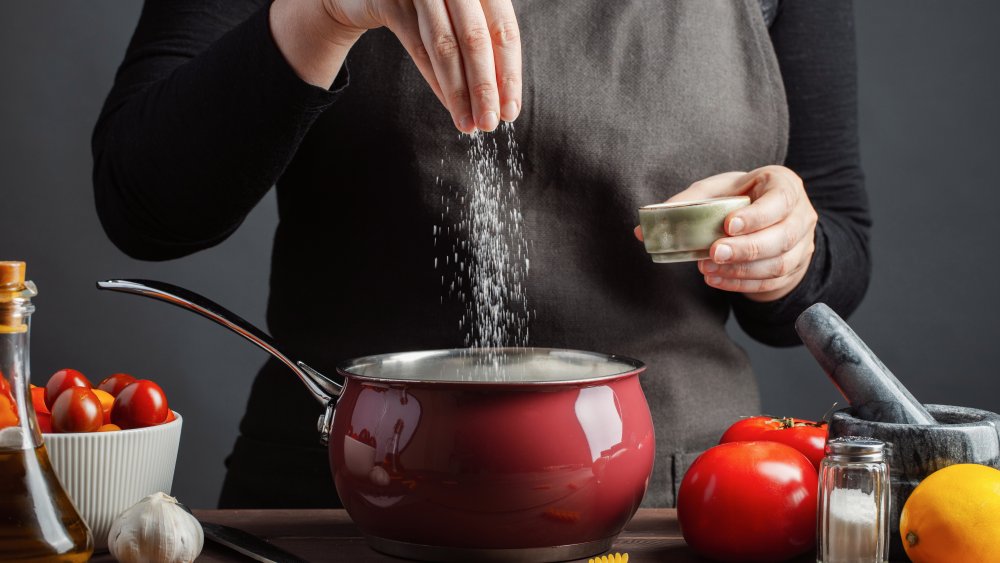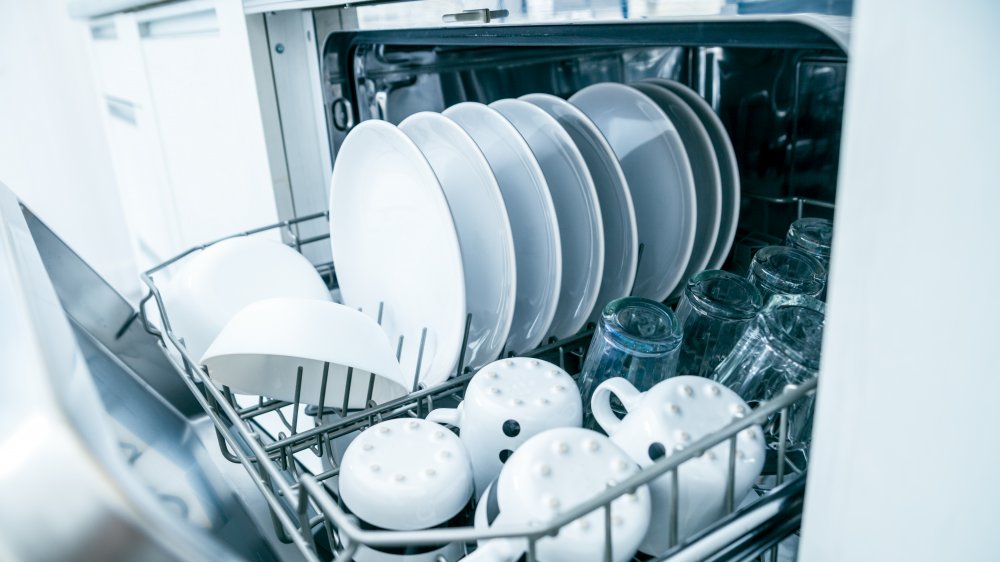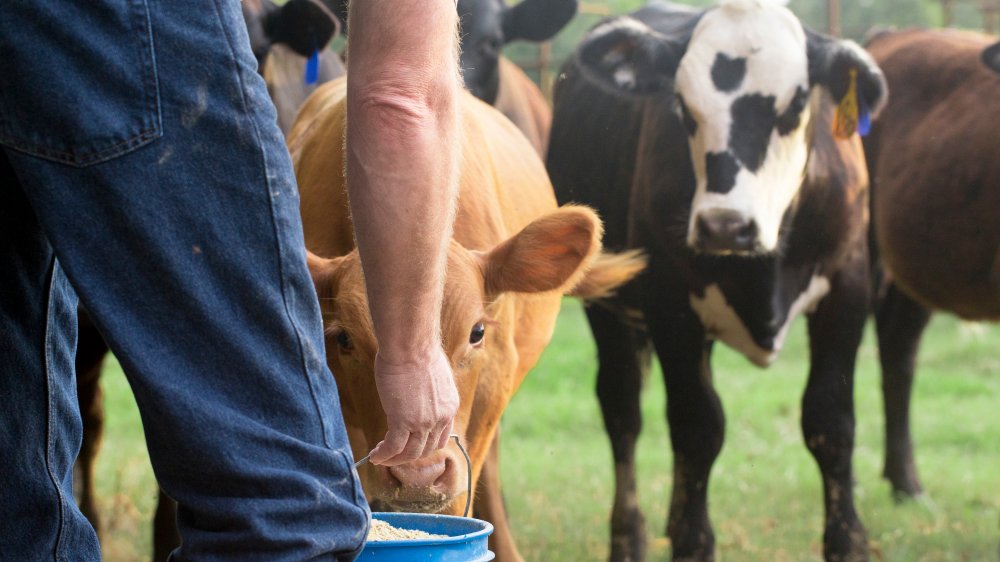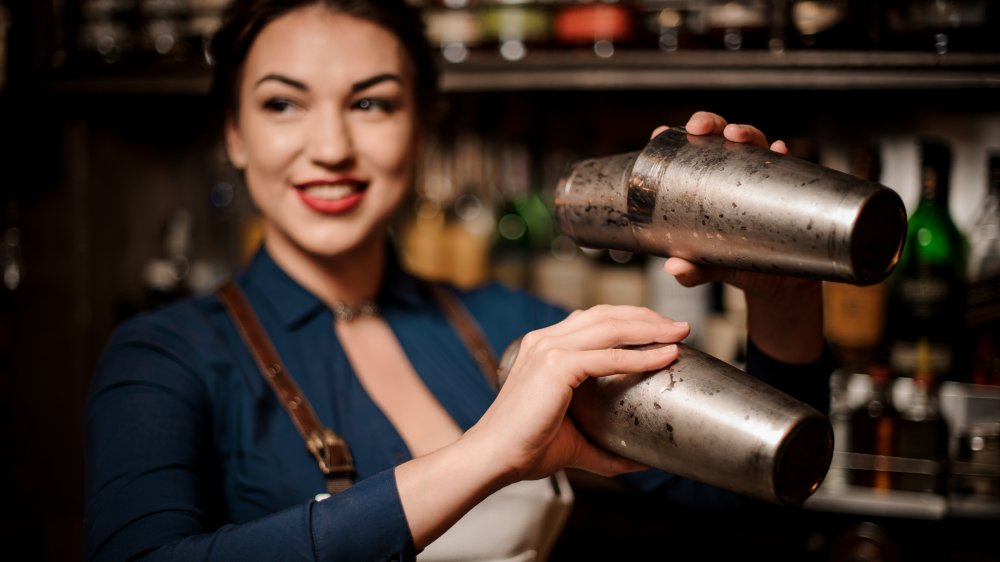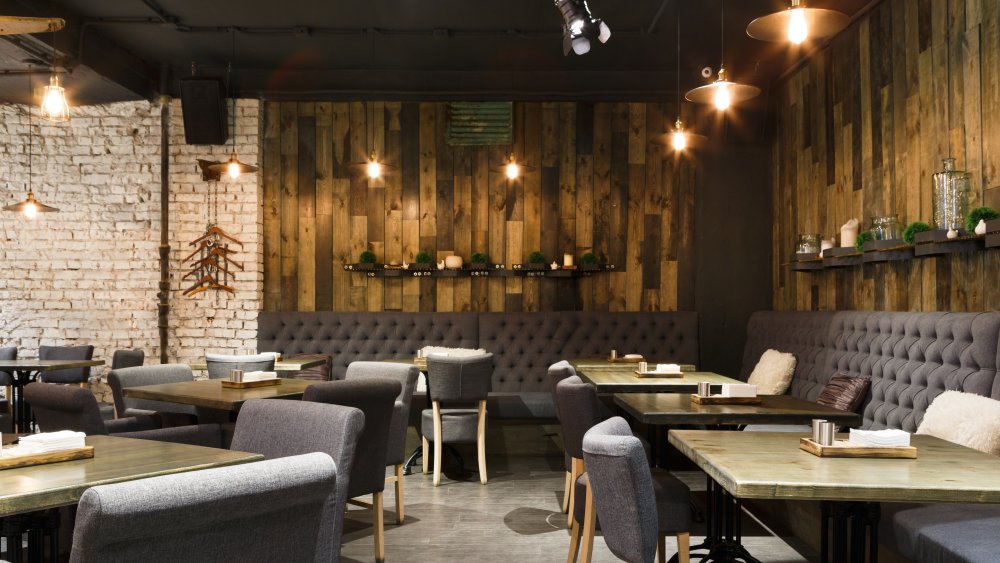This Is How You Know You're At A Bad Steakhouse
Steakhouses are the site of anniversaries, birthdays, holiday parties, engagement parties, first dates, and so many other meaningful moments in our lives.
And because of that, it's especially important for a steakhouse to really get it right, every single time. From the moment you walk through the front door to the moment you pay your tab, a good steakhouse should make the entire evening feel effortless and fun. There's nothing worse than visiting a steakhouse to celebrate an occasion or to spend quality time with someone you love, only to leave feeling disappointed or worse, upset because of a bad experience.
Luckily, most steakhouses do a great job. But there are a few bad apples here and there, as with anything. Bad customer service, overcooked steak, misinformed waiters, dirty bathrooms — these are all warning signs that you're eating at a bad steakhouse.
The next time you visit a steakhouse for dinner, be sure to keep an eye out for these red flags. If you experience one (or several!), it's time to move along and find a new favorite steakhouse.
The waiters are not knowledgeable about the menu
If you're paying an arm and a leg for a nice meal at a steakhouse, your server should be a true professional who is able to answer any questions you might have, according to the Orange County Register.
If you're met with a dumbfounded stare or, worse, a shrug and an "I don't know" when you ask a question about the menu, it's time to hightail it out of there. At a high-quality steakhouse, your server should basically be your tour guide, talking you through the entire evening without being overbearing. If you truly don't understand how a dish is prepared or you've never heard of an ingredient before, your server should easily be able to fill you in, without being judgmental. It's his or her job.
At the very least, a waitperson should politely and graciously acknowledge a gap in his or her knowledge, then find someone else who can answer your question. Their top priority should be keeping you, the customer, happy and satisfied, even if it means tracking down the owner, chef, manager, or sommelier to help address your questions.
The bathrooms are gross and unmaintained
Think about it: The bathrooms are one of the few places that members of the public actually see when they visit a steakhouse. If this very public-facing spot is gross or not very well maintained, just think of the spots you're not seeing — the kitchen, behind the bar, and the stock room, for example. If the restaurant staff isn't willing or doesn't have time to clean the bathrooms, they're probably not doing a great job cleaning in other places, either. It's gross to think about, but likely true.
Why does cleanliness matter? Well, foodborne illnesses are no joke. In fact, some 48 million people get sick from a foodborne illness every year — every year! The Centers for Disease Control and Prevention says the top five germs that cause these foodborne illnesses, aka food poisoning, are: norovirus, salmonella, clostridium perfringens, campylobacter, and staphylococcus aureus. Restaurant cleanliness and hygiene — across the board, throughout the entire restaurant — are the keys to making sure these nasty hitchhikers don't hop aboard your plate of food or your cocktail, then take up residence in your stomach. Your restaurant's staff should be washing their hands, sanitizing surfaces, washing their utensils, and following tons and tons of other food-safe guidelines, according to the CDC. Bathrooms are just as important to keep clean as other spaces.
The manager won't make things right when the steakhouse screwed up
Look, we get it. Nobody — and no steakhouse — is perfect. Accidents happen. Mistakes make it to your table. Waiters accidentally say the wrong thing, chefs get busy, busboys can't keep up, bartenders misunderstand your order.
But where a restaurant really has a chance to shine is how they react to these mistakes. Do they double down and get defensive, or do they calmly and clearly apologize for what went wrong, then outline a path forward for how they plan to improve? Do they offer to comp your meal (or at least part of your meal)? Give you a gift card for your troubles? You can tell a lot about a restaurant by how they respond to mixups and issues.
If something has gone wrong and the manager refuses to make things right, it's probably time to find a new favorite steakhouse. The best restaurant owners understand that keeping customers happy is one of the most important elements for success — in fact, they welcome constructive criticism, according to the Washington Post. Even little touches, such as giving you a free drink and some appetizers to munch on while you wait, can go a long way in the restaurant business. In reality, a restaurant is only as good as its reputation, after all.
The side dishes are boring and bland
Traditional steakhouse sides haven't changed much over the years. Baked potato, house or caesar salad, French onion soup, maybe some green beans here and there. And some people might be fine with that — as the saying goes, "If it ain't broke, don't fix it."
But it doesn't have to be this way. One of the marks of a good steakhouse is an innovative chef who's putting his or her unique spin on the menu. Sure, you'll find those classic steakhouse sides on the menu, but you'll also have the option of trying something new and exciting. Side dishes don't have to be an afterthought, even though you probably came for the steak. There are tons and tons of delicious side dishes to accompany your meal, according to Taste of Home. These days, farmers love partnering with restaurants and providing just-picked vegetables from the farm. Likewise, there are artisanal breadmakers, adventurous mushroom foragers, and worldly purveyors offering up their delicious wares to steakhouses across the country. Why settle for boring and bland sides when you could be eating something that truly enhances your steak?
The floors, tables, and countertops are dirty
When you walk into a reputable, top-notch steakhouse, you can usually see and smell just how clean it is. The windows sparkle, your table is free and clear of spills and stains, the bar is not sticky.
But if you walk into a steakhouse and the surfaces look or feel grimy, you might want to turn back around and head somewhere else. In fact, cleanliness is one of the most important criteria for diners visiting a store or restaurant according to QRS Magazine. Restaurants should be cleaning and sanitizing surfaces nearly constantly when they're open for business. It's not enough to clean once a day after all the diners have gone home. Servers or busboys should be sanitizing each table or booth in between each party. The bartender should be sanitizing the bar surface regularly, in between making drinks.
These surfaces can harbor harmful bacteria that can make you very sick, which is why it's so important to evaluate the cleanliness of the floors, tables, and countertops any time you visit a steakhouse for dinner.
It takes a long time for you to get service at your table
There is nothing more frustrating than walking into a steakhouse, starving, then waiting and waiting for a server to stop by your table to take your order. It doesn't happen all that often, but when it does, it's likely an indication that you're not at a very good restaurant.
Why? Because keeping diners happy is the No. 1 job of restaurant servers, bartenders, hosts, and managers. If you're kept waiting at your table for what feels like an eternity, it likely means there was a breakdown in communication between the host who seated you and the waitstaff responsible for your table. Even worse? A waiter who walks by your full table multiple times and doesn't even make eye contact. If your server is oblivious to a table full of people, what else might she/he be overlooking or forgetting? It's just bad news.
If you've been waiting for your drinks or food for an inordinately long time, it's perfectly fine to stand up, walk over to the bar, pay for what you've already ordered, and boogie, according to The Takeout. And maybe ask to speak to the manager on your way out the door.
Your steak is not prepared to order
After your server takes your drink order, brings over a basket of bread, and drops off any appetizers your table ordered, he'll next ask for your main course selection. If you order a steak, you're guaranteed to hear some variation of: "And how would you like that cooked?"
But if you say medium-rare and your steak comes out well-done, or vice versa, that's a huge red flag. A steakhouse needs to get a lot of things right in order to be successful, but perhaps more important than anything else is actually cooking up a good steak. Sure, a good steak starts with a good cut of meat. But even a good cut of meat is no good if it's not cooked to order. Any steakhouse chef worth his or her salt can cook your steak exactly how you like it prepared, no more and no less.
If your steak comes back all wrong, don't hesitate to send it back, says Taste of Home. And maybe try a new steakhouse next time.
There's no sommelier or someone to help pair wine with your meal
Any steakhouse worth its salt (no pun intended!) should have a sommelier on staff, a trained wine snob who can help you decide which glass of wine to pair with your meal. And if they don't have an actual sommelier, at the very least, they should take the time to train their waitstaff and bartenders to make wine-pairing recommendations.
Sommeliers aren't just there to get you to spend more money on your meal. In fact, they go through months and months of rigorous training in order to be eligible for certifications that demonstrate their knowledge and expertise (via Business Insider). Having the right wine with your meal can actually enhance the flavors, smells, and textures in your mouth, making it worth every penny you spend. If you're going to order some wine, why not make it count, right?
If you're visiting a steakhouse without a sommelier, it's not a total dealbreaker. But this may not be the restaurant you take your in-laws to while they're in town if you're trying to impress them.
The steakhouse is mostly empty
You can tell a lot about a restaurant by how full the parking lot is or how many tables are full in the dining room or bar. When the steakhouse is full, we tend to assume that means it offers delicious food and great service. When the steakhouse is empty, we assume the opposite — that it's not very good and therefore not worth visiting.
There's a reason why diners flock to one steakhouse, crowding the lobby to wait for a table, while leaving another steakhouse down the road completely empty. Chances are, the restaurants have earned very different reputations — for better or for worse.
This psychological concept is known as "social proof," according to Fast Company. When we see a crowded steakhouse compared to an empty one, our brains interpret that as evidence that the steakhouse is clean, offers a good value, and turns out delicious food. We like following in the footsteps of others because it gives us more certainty about the choices we're making.
Your food is too salty
It's no secret that restaurants are notorious for oversalting the food they serve. In fact, researchers with the American Heart Association, say that eating out is contributing to our overconsumption of salt across the board — at all different types of restaurants serving all different types of cuisines.
If you're having dinner at a nice steakhouse, however, you'll want to be mindful of how the food on your plate tastes. A good chef knows that adding just the right amount of salt — not too much and not too little — can make a steak taste savory and delicious, without hiding the natural flavors of the meat. Too much salt could be an indication that the cut of meat is not very nice or that the chef just wasn't paying much attention during the cooking process. Either way, if you leave a restaurant with a dry mouth, you may want to think twice about visiting again.
The utensils and dishes aren't clean
This pretty much goes without saying: When you're dining out, especially at an expensive steakhouse, you expect the forks, knives, spoons, plates, and water glasses to be sparkling clean. Spotty glasses or plates with food stuck to them and you should probably walk right out the door.
Aside from being just plain gross, dirty utensils could be indicative of way bigger problems. It could be a sign of a broken dishwasher, which means that the restaurant doesn't have money to fix one of its most important appliances (or just didn't even notice that it wasn't getting dishes clean!). It may also mean that the restaurant isn't following local health rules, which are put in place to keep diners safe and healthy.
Unfortunately, if you visit a steakhouse and are served with dirty utensils, you're not alone. It's one of the most common complaints people have about restaurants, according to Consumer Reports.
They don't share anything about where they source their meat and other ingredients
When you walk into a high-quality steakhouse, sit down, and open the menu, you're typically bombarded with information about where the restaurant sources its beef, other meats, and produce. In fact, there may even be farm or ranch logos printed on the menu, proudly declaring that the steak you are about to eat came from a sustainable ranch just down the road.
If this type of information is not readily available, you might be dining at a second-rate steakhouse. These days, diners demand to know where their food is grown, how it was raised, and how far it traveled to get to their plates (aka its carbon footprint), according to the Culinary Vegetable Institute. Many restaurants even use their sourcing as a selling point — they're proud to be partnering with hard-working, local farms and ranches that do right by the land and their animals. There's a reason why the phrase "farm to table" is so popular and ever-present these days. Restaurants that are tight-lipped about their food sources may not be sourcing their ingredients from ethical or sustainable purveyors.
They don't know how to make the cocktail you requested
Chances are, if you're visiting a steakhouse, you're prepared to indulge and unwind. A few drinks, appetizers, a nice steak, maybe even dessert.
But there's nothing worse than sitting down and giving your waiter your drink order, only to be told a few minutes later that the bartender doesn't know how to make your cocktail. This is indicative of untrained, unprofessional, and inexperienced staff at a steakhouse and it might be time to move along.
Any steakhouse worth visiting should have a bartending pro — or several — working behind the bar. Sure, maybe if your drink is so obscure that no one has ever heard of it, that's one thing. But a skilled, professional bartender should be able to make just about everything under the sun (or be able to look up how to make a drink they're unfamiliar with!). At the very least, a reputable steakhouse bartender should be able to make every single "official" drink listed by the International Bartender's Association.
The decor hasn't been updated in years
Steakhouses already sometimes get a bad rap for being outdated and uncool — they're where your parents and grandparents loved to eat, but they're not really all that hip for the younger generations. Without a creative chef in the kitchen, the menu items can become bland and predictable. Too heavy, too much salt, not enough vegetables.
Another element that can make a steakhouse feel old and tired? The decor. Sure, the food might still be very good, but a large part of the dining experience is the ambiance, or the way the physical space itself makes you feel when you're celebrating an anniversary or special occasion. Fresh, updated decor sends the message that the steakhouse is constantly innovating and that it's a warm, comfortable place to spend the evening. People "eat" with their eyes first, so the decor isn't something that a steakhouse should simply ignore, says Fine Magazine. The same goes for outdated uniforms, menus, and other restaurant staples.
The servers cough or sneeze into their hands
You're on your way to the bathroom while dining out with friends at an expensive steakhouse. You walk past the kitchen or the server station and notice your waitress sneeze right into her hands, then wipe them on her pants and head back out onto the floor. Yikes!
This is such a red flag and a total violation of restaurant etiquette 101. And in fact, it goes beyond that, since it's a food safety and health issue. The waitstaff, host, kitchen staff, and anyone else working in a restaurant should never come to work sick. And even if its just allergies, they should always cough or sneeze into the crook of their elbow, then immediately wash their hands thoroughly with soap and warm water, per CDC guidelines. Since they interact with so many people on a daily basis, and they touch the foods and drinks that diners put into their mouths, it's of the utmost importance that restaurant staffers take all the necessary health precautions.
If you see someone cough or sneeze into their hands, be sure to politely let the manager know. And if that doesn't seem like enough, go ahead and alert your county health department. They may feel compelled to conduct a random restaurant inspection just to make sure everything's ship-shape.
